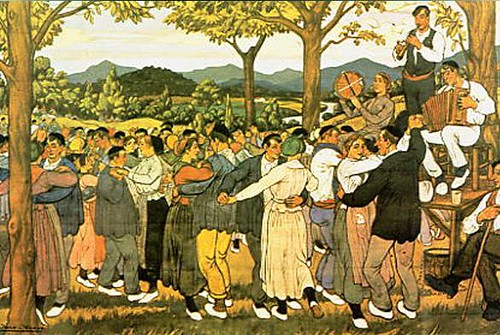The evolution of the trikitixa
Trikitixa
is a Basque diatonic accordion with right-hand rows keyed a fifth apart and
twelve unisonoric bass buttons. It is played with the tambourine, and normally it
is accompanied with voice.
Trikitixa’s first written evidence is attested in 1889, when diatonic accordion
was used for music in a popular pilgrimage festivity of Urkiola (Bizkaia). In
Some of the most important trikitixa players were Elgeta, Sakabi, Epelde,
Auntxa, Laja, Gelatxo and Maltzeta. In the past the trikitixa festivals were
very popular; and for most of the trikitixa players playing trikitixa was their
job. And some of the most important tambourine players have been Juliana
Esnaola Muxillo, Egañazpi, Iturbide and Landakanda.
The way of playing did not change up to the 1980s when Joseba Tapia and Kepa Junkera started to develop
unprecedented ways of playing trikitixa. They caught on both styles,
traditional and modern trikitixa; both performers remain nowadays key figures
of this instrument, like Maixa Lizarribar, Alaitz Telletxea, Iker
Goenaga or the Catalan Carles Belda.


Iruzkinak
Utzi iruzkina: